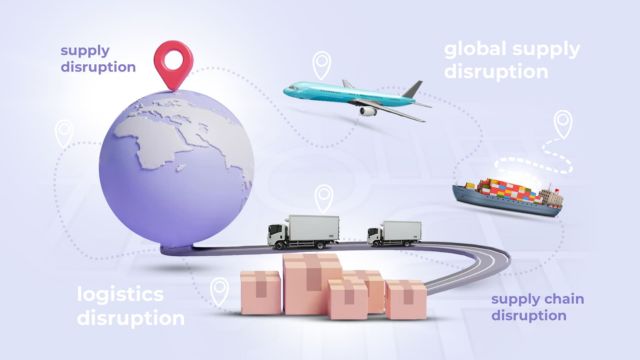Every company moving goods from raw materials to consumers in the worldwide economy of today depends critically on the supply chain. Consumers get their wanted goods on schedule when the supply chain is running without problems. When disruptions arise, though, they directly affect product availability, resulting in losses for companies and consumer annoyance.
This post will go over what supply chain interruptions are, how they impact product availability, and how companies could strengthen their supply systems.
What Are Supply Chain Disruptions?
Supply chain disruptions are unexpected events that cause interruptions at any stage of the supply chain. These disruptions can take many forms, such as:
-
Natural Disasters: Earthquakes, floods, hurricanes, fires that damage factories, warehouses, or transportation routes.
-
Global Pandemics: Like COVID-19, which forced factory closures, slowed logistics, and changed demand patterns worldwide.
-
Transportation Issues: Strikes, traffic jams, fuel shortages, or accidents delaying the delivery of goods.
-
Supplier Problems: Financial difficulties or shortages faced by suppliers can halt production lines.
-
Political and Regulatory Changes: Trade restrictions, tariffs, or border closures force companies to adjust their supply chains.
-
Technological Failures: Cyberattacks or IT system outages can disrupt supply chain operations.
How Do Disruptions Affect Product Availability?

1. Production and Delivery Delays
If raw materials or components don’t arrive on time, manufacturing slows or stops. Finished products may also get delayed during shipping, pushing back delivery to customers.
2. Inventory Shortages and Stockouts
Interrupted supply chains prevent timely restocking, leading to empty shelves and fewer product options for consumers. This causes lost sales and unhappy customers.
3. Increased Costs
Disruptions often mean using alternate routes or expedited shipping, increasing transportation and storage costs. These expenses are usually passed on to customers through higher prices.
4. Impact on Customer Trust and Satisfaction
Repeated product shortages or delivery delays inconvenience customers, weakening brand loyalty and pushing consumers to competitors.
5. Increased Supply Chain Complexity
Disruptions force businesses to redesign supply chains, find new suppliers, and implement new processes, which can be time-consuming and costly.
Real-World Examples of Supply Chain Disruptions
COVID-19 Pandemic
The pandemic posed a major challenge to global supply chains. Lockdowns closed factories, transportation slowed, and demand patterns became unpredictable. Essential medical supplies, groceries, and electronics faced significant shortages.
2011 Japan Tsunami
This natural disaster severely damaged supply chains in the automotive and electronics sectors. Global manufacturers had to adjust production schedules, resulting in delayed product launches.
Suez Canal Blockage (2021)
A massive container ship became stuck in the Suez Canal, blocking a vital global shipping route. This incident caused significant delays and shortages, especially in electronics and consumer goods.
How Can Businesses Handle Supply Chain Disruptions?
1. Diversify Suppliers
Sourcing from multiple suppliers and regions reduces risk. If one supplier fails, alternatives are ready to step in.
2. Manage Inventory and Maintain Safety Stock
Keeping extra inventory for critical products helps businesses manage short-term disruptions without affecting customers.
3. Use Advanced Technology
Real-time tracking, AI, and predictive analytics help identify risks early and allow businesses to respond faster.
4. Build Strong Supplier Relationships
Close communication and collaboration with suppliers enable quicker problem-solving during disruptions.
5. Flexible Logistics and Multiple Transport Options
Having alternative transport routes and methods prevents bottlenecks if one option becomes unavailable.
6. Risk Management and Contingency Planning
Analyzing risks at every supply chain stage and creating emergency plans helps businesses stay prepared for unexpected events.
Conclusion
Supply chain disruptions have a direct and significant impact on product availability. They compromise customer experience and brand reputation in addition to corporate operations. However, with the appropriate strategy, technology, and planning, organizations can construct resilient supply chains that efficiently manage interruptions and continue to deliver products to customers on schedule and reliably.
Looking for reliable industrial and safety supplies? At JandJSupplies, we offer quality products, timely delivery, and expert support to keep your operations running smoothly. Browse our wide range today and experience hassle-free ordering with trusted service you can count on!








